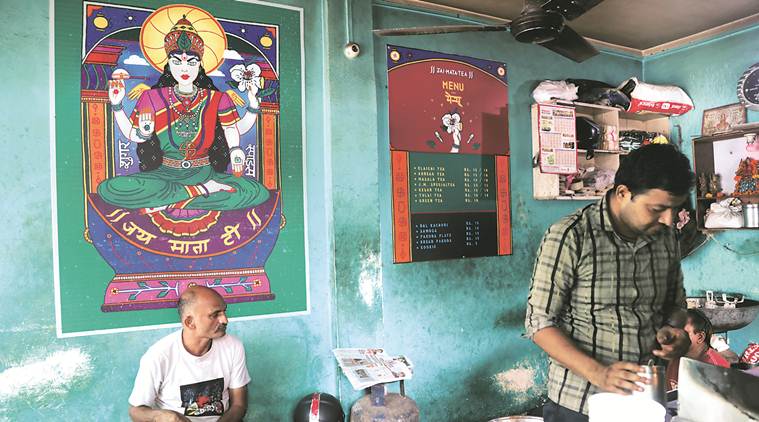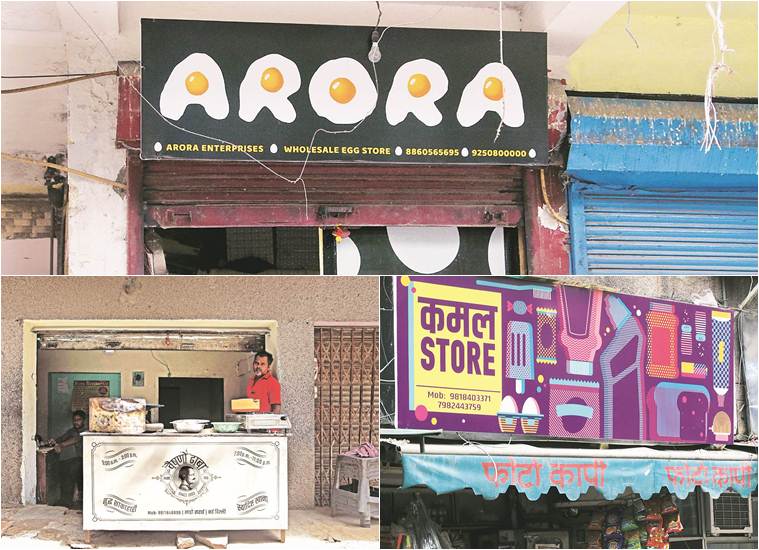Street Smart — a graphic design project in Delhi honouring India’s 71 years of independence
Indianama 2018 injects verve into quiet markets across Delhi, using graphic design as a pliable medium.

Organised by Delhi-based creative agency, Animal, that helps firms rebrand their identity.
Most shops on Indian streets are constantly touched by everything from policies to pollution. But what if art and design gave them an edge, to stay apart, and be counted? Indianama 2018 injects verve into quiet markets across Delhi, using graphic design as a pliable medium. Organised by Delhi-based creative agency, Animal, that helps firms rebrand their identity, the project brings the action to the streets, working with 71 vendors from Karol Bagh, Saket, Mehrauli, and Said-ul-Ajab to Chandni Chowk, Jama Masjid and Chawri Bazaar.
Along Karol Bagh’s Tricona Park, sits Sat Nagar, a colony that grew out of hills and huts during Partition. The busy lane with a variety of shops, from welders to wholesale retailors, is suddenly catching the eyes of passers-by. Store frontages wear new colours and boards are strikingly different from their earlier faceless forms. Arora Egg Store, which is in the business of selling eggs by the tray, now carries a unique board that shows eggs sunny-side up in the font. Graphic designer Kawal Oberoi worked on the simplicity of the product itself. “At the end of the day, it’s an ande ki dukaan, I didn’t want to make it too gentrified or upscale. It had to be a design that people would relate to,” says the Kasol-based designer.
While Oberoi says a project like Indianama is the dream of every designer, Kunel Gaur, Founder-Creative Director, Animal, says, “It’s about giving design access to entrepreneurs on the street and helping them with their branding, packaging and merchandise.” He has roped in 71 designers across the country, who have enhanced the identities of smaller businesses from chaat, chowmein and biryani stalls to electricians, hakims and vegetable vendors. A capsule of this project is on display at Bikaner House as part of their festival.
If the Jai Mata Tea stall sports a mural of the goddess with a sieve in one hand, hibiscus in another and vegetarian only signage on the third, you know it is a designer’s mind at work. Birdichand Welding Works carries a minimalist logo of iron rods in the shape of the letter B. Kamal Kishore, who runs Singh Art Studio, has been instrumental in getting the stores to agree to the changes in signage. “We’re hoping this market will come to life with these interventions. It’s about changing people’s perception that design matters,” says the 36-year-old College of Art graduate.
Elsewhere in Lado Sarai, Chalit Mukhiya has been running Vaishno Dhaba since 1993. His shop signage reflects an old-world charm of vintage coffee cans and labels. Graphic designer Abhishek Choudhary says, “When you think of dhabas in India, one is easily transported to pop colours and kitsch. But when I met the owner, I realised he was a simple man. So I drew my references from vintage Indian packaging and aesthetics of old. I’m also painting his walls, which will tell his story of how he began with just a food cart,” says the 27-year-old.
While some shopkeepers say it’s too early to tell how the design changes will affect their business, Bhagwat Singh of Rana Bakery continues to hold on to his old board despite the nouveau signage. “This doesn’t show the photo of the cakes I’m selling,” he says. A regular at his store assures him, “Don’t worry, we see you, not the board when we come for your cakes.”






















 Designers across India have come together using colour, fonts and symbols to refashion store signages in Delhi’s markets. (Express photo by Abhinav Saha)
Designers across India have come together using colour, fonts and symbols to refashion store signages in Delhi’s markets. (Express photo by Abhinav Saha)
No hay comentarios:
Publicar un comentario